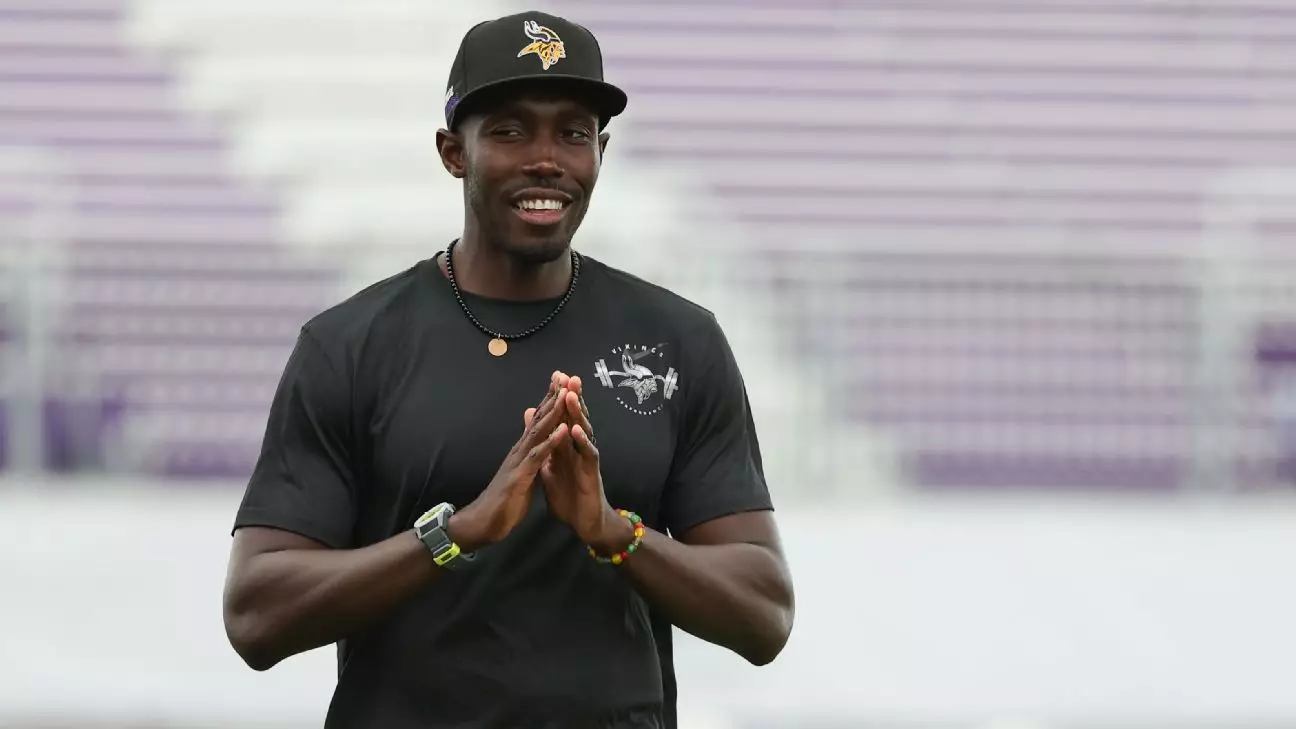In a bold move signaling the Minnesota Vikings’ commitment to a new vision, general manager Kwesi Adofo-Mensah recently extended his contract, solidifying his place in the team’s leadership for the foreseeable future. This decision follows closely on the heels of head coach Kevin O’Connell’s own contract extension, which evidently reflects a unified strategy for driving the franchise forward. Both contenders, having started their respective tenures in 2022 with agreements that initially spanned four years, are now seen as cornerstones in a pivotal period for the Vikings.
Many fans may welcome this stability, as it implies a continued and coherent direction amid the fluctuating fortunes of NFL rosters. However, questions linger about the efficacy of their methods and whether the existing leadership can capitalize on the promise they’ve exhibited.
Leadership with a Quantitative Twist
Kwesi Adofo-Mensah, recognized as a trailblazer in the realm of sports analytics, has changed the narrative around how front offices assess talent and make decisions. His unconventional background—transitioning from finance to football—brings a fresh perspective, one that values data and empirical evidence over traditional scouting. However, while this approach has its merits, the results on the field tell a different story. During Adofo-Mensah’s tenure, the Vikings have seen a stark reality: their draft picks have yielded lower-than-expected outcomes, resulting in an unusually high dependency on free agency to bolster the roster.
The infusion of capital into free agency, most recently highlighted by the signing of three Pro Bowl-caliber players in 2024, demonstrates an aggressive approach to team-building. Nonetheless, it serves as a stark reminder of the limitations faced by the franchise in terms of effectively developing their own homegrown talent. Sending 12 new players out onto the field is commendable, but relying heavily on the trade market and established veterans could potentially hinder the team’s long-term growth and sustainable success.
The Complicated Relationship with Drafting
Drafting successes can delineate the fortunes of a franchise, and here, the Vikings have struggled. With only 107 starts from their draft picks since Adofo-Mensah’s hiring, they rank second-lowest in the league. This fact raises serious concerns about their scouting and evaluation processes, prompting fans to wonder if the analytical approach may be overlooking the human element critical to player development.
While it is easy to blame the personnel decisions solely on Adofo-Mensah, such responsibility should also weave into the fabric of the scouting department’s strategies. Has the focus on analytics overshadowed traditional scouting techniques, leading to missed opportunities for discovering diamond-in-the-rough talents? The franchise may need to recalibrate its focus, steering towards a more balanced approach that embraces both data and instinctive scouting insights.
Future Aspirations and Challenges
Despite these shortcomings, the Vikings are undeniably positioned for continued playoff contention under the leadership duo of Adofo-Mensah and O’Connell. Adofo-Mensah’s recent restructuring that includes adding trusted lieutenants like Ryan Grigson and Demitrius Washington indicates a move to bolster his front office’s capacity for decision-making processes. This approach may infuse new energy into an organization that has struggled to break through the postseason glass ceiling.
Ownership, represented by Mark Wilf, has placed their faith in Adofo-Mensah, citing his vision as critical to establishing a championship-caliber team. Yet, it remains essential for the front office to scrutinize the efficacy of their methods moving forward. The pressure to deliver results is more palpable than ever, and with each critical draft and free agency period, the stakes grow higher.
A New Chapter in Vikings History
As the Minnesota Vikings gear up for the challenges ahead, the real test lies in whether they can successfully harness Adofo-Mensah’s analytics-driven strategies alongside O’Connell’s coaching prowess. Cementing a legacy of success will depend on their ability to adapt and innovate based on lessons learned in previous seasons. Ultimately, the Vikings’ future hinges on their capacity to create a cohesive team that transcends the limitations of their past decisions, embracing both tradition and transformation. The football world will be closely watching how this franchise evolves as it chases its elusive championship dream.

